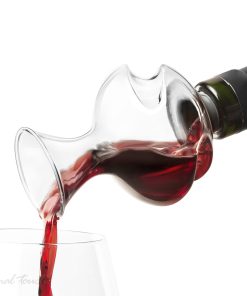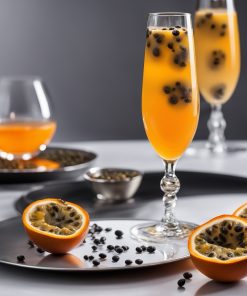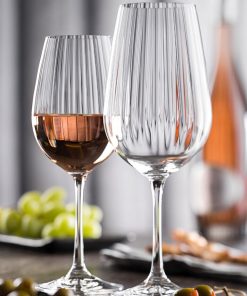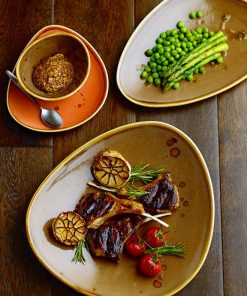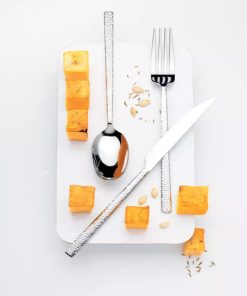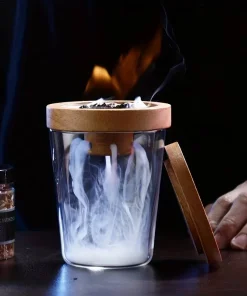We drink coffee, and as by magic, a sovereign power doubles our energies. This is due to the primary psychoactive chemical called caffeine, which is also helpful against numerous illnesses, particularly those of the stomach, but excessive consumption can be dangerous. But the coffee is more than this.
Coffee is one of the most popular drinks in the world; it is a brewed drink prepared from roasted coffee beans, which are the seeds of berries from the Coffea plant. All coffee plants are classified in the large family Rubiaceae.
The etymology of the word coffee refers to the Arabic word qahwa, which initially identified a drink whose stimulating effects made it suitable for use as a medicine. Later was translated as coffee, cafe, and coffee.
History
The origins of the coffee are wrapped in great tales. The one that has the most notoriety is the story of the Ethiopian goatherd Kaldi, who discovered coffee in the 9th century when he noticed how excited his goats became after eating the beans from a coffee plant.
Other accounts attribute the discovery of coffee to Sheikh Omar, who was known for his ability to cure the sick through prayer; he was encouraged by an angel to go to a city where there was the plague; he succeeded in healing many sick, including the daughter of the king from whom he fell in love.
The king disagreed of this love story and banished him from Mocha, placing him in solitary confinement within a desert cave. Hungry, Omar ate nearby berries but found them to be bitter. In a taste-enhancing attempt, he roasted the seeds, but unfortunately, they turned hard. To tenderize the seed, he boiled them, creating a fragrant brown liquid. After drinking the liquid, Omar felt rejuvenated and energized for days.
As stories of this “miracle drug” reached Mocha, Omar was asked to return bringing alongside this magical potion. Which was latter spread in all Arab world.
Thanks to the thriving trade between Venice and North Africa, Egypt, and the Middle East, coffee was later introduced in Europe. Part of the merit goes to the coffee houses, and the first European coffee house opened in Venice in 1640.
Pope Clement VIII 1600 had a crucial role in the diffusion of this beverage, and it became more widely accepted after it was deemed a Christian beverage, despite initially being called a “Muslim drink.”
The British East India Company popularized coffee in England. France first encountered coffee in 1657, while Austria and Poland were introduced to it after the Battle of Vienna in 1683 when coffee was captured from supplies of the defeated Turks.
The coffee was first imported on a large scale by the Dutch East India Company from Indonesian in 1711.During the colonial period, coffee was less popular in North America compared to Europe due to the continued alcohol preference. During the Revolutionary War, the demand for coffee increased after Britain stopped tea imports during the War of 1812. In the 18th century, coffee lost popularity in England, paving the way for tea to become the preferred hot drink. The latter beverage was simpler and had become cheaper with the British conquest of India and the tea industry there. In the age of “sail,” British sailors created a coffee substitute by dissolving burnt bread in hot water.
The Frenchman Gabriel de Clieu transported a coffee plant to the French territory Martinique, now a major source of worldwide arabica coffee. Coffee was grown in Haiti, then known as Saint-Domingue, from 1734, and by 1788, it supplied 50% of global coffee.
In 1727, Brazil was introduced to coffee, and it became popular after its independence in 1822. Forests started to be cleared for coffee cultivation, first near Rio de Janeiro and later in São Paulo. Brazil went from having essentially no coffee exports in 1800 to being a significant regional producer in 1830 to being the largest producer in the world by 1852. In 1910- 1920, Brazil shipped 70% of global coffee, 30% was split between Colombia, Guatemala, and Venezuela.
Coffee varieties
Currently, Brazil produces over 25 million bags annually, accounting for 30% of global production.
Colombia follows with around 14 million bags yearly. Jamaica excels in producing the renowned blue mountain coffee, praised for its delightful aroma and tangy flavor.
There are about 4500 varieties, 60 species from the Rubiacee family, and the most commonly grown are:
– the highly regarded Arabica
– the less sophisticated but stronger Robusta.
The two types differ in taste, growth conditions, and price. Arabica berries ripen in 6-8 months, while Robusta berries take 9-11 months to ripen.
Arabica beans have a milder flavor with notes of sweetness, fruitiness, and subtle berry hints. The coffee has a unique, wine-like acidity. Tipica, Moka, and Bourbon are Arabica families.
Robusta offers a bold taste and a lingering nutty flavor. The beans have double the caffeine of Arabica beans and are commonly seen as lower quality.
The beans have double the caffeine of Arabica beans and are commonly seen as lower quality. Certain Robusta coffee beans are highly valued for their exceptional characteristics, particularly in espressos, due to their delicious flavor and quality crema.
Robusta cultivation is easier and can thrive at lower altitudes; It produce fruit much more quickly than the Arabicas, which need several years to come to maturity, and they yield more crops per tree.
Robusta coffee is grown in the Eastern Hemisphere, mainly in Africa and Indonesia. Arabica is also grown in Africa and Papua New Guinea, but it’s grown dominantly in Latin America. Colombia only produces Arabica beans. Some countries, like Brazil and India, produce both.
Adding Robusta to Arabica can enhance the intensity and balance the flavor. When choosing a blend, remember that Robusta coffee has double the caffeine content of Arabica coffee.
Coffee production
Coffee berries and their seeds undergo several processes before they become a cup of coffee. The berries have been traditionally picked by hand (the hand picking is more expensive but more accurate and also slower), and now more commonly, crops are harvested by machine (faster but not accurate).
After picking, it is necessary to extract the seeds. There are two methods:
– Dry: the berries are sun-dried for a few days. After drying, the beans are processed in a decorticating machine to remove the outer layers, transforming them into beans.
– Wet: the berries are placed in a machine that removes the outer layer. Afterward, they are soaked in water tanks for two to three days to ferment and remove any remaining film. They are cleaned and dried.
One efficient method for drying coffee is using drying tables. This method ensures uniform drying, reducing fermentation risk. Most African coffee is dried in this manner. The coffee is then sorted and classified as green coffee.
Roasting
The next step in the process is roasting.
The roasting process influences the beverage’s taste by
changing the coffee bean both physically and chemically. The bean decreases in weight as moisture is lost and increases in volume, causing it to become less dense. The density of the bean also influences the strength of the coffee and the requirements for packaging.
The roasting process starts at 200 °C (392 °F). Caramelization happens when coffee beans are roasted at high temperatures, converting starches to sugars. As a result, the coffee bean changes color becoming darker.
Sucrose is rapidly lost during the roasting process and may disappear entirely in darker roasts. During roasting, aromatic oils, and acids weaken, changing the flavor; at 205 °C (401 °F), other oils start to develop. One of these oils, caffeoyl, is created at about 200 °C (392 °F), largely responsible for coffee’s aroma and flavor.
Blending
The enjoyment of coffee is derived from achieving a harmonious balance between the taste qualities, delicate aroma, and rich body. Like a skilled cognac master blender, the role of the roaster involves analyzing the distinct qualities of each bean to create a blend that surprises and delights consumers, ensuring the most optimal outcome for the eye and taste buds.
Decaffeination
Decaffeination refers to the process of removing caffeine from a substance, often done to make coffee or tea less stimulating. Numerous techniques can be employed, all of which entail either immersing the unripe seeds in heated water or subjecting them to steam, followed by using a solute to dissolve oils containing caffeine. This extracted caffeine is typically marketed to the pharmaceutical sector.
Did you know that…
One of the most expensive coffees in the world is an Asian coffee known as kopi luwak. The coffee beans are consumed by the Asian palm civet, which goes through its digestive system, and then collected from its excrement. This brewing method can be quite expensive, priced at $160 per pound or $30 per cup. Kopi luwak coffee has a luxurious and smoky flavor with hints of chocolate. This is due to the beans’ proteins breaking down through digestive enzymes during fermentation.
Brewing
Most coffee-making techniques involve grinding beans and combining them with hot water for a specific amount of time to extract the desired flavor without any bitter elements.
The brew ratio, along with the option to add sweeteners, milk, or spices, and the method to separate used coffee grounds are also important factors. The recommended temperatures for brewing range from 85–88 °C (185–190 °F) to as high as 93 °C (199 °F), with the ideal serving temperature being 68 to 79 °C (154 to 174 °F).
Turkish system. The real secret is to boil the drink twice.
Percolating system. The water passes through the coffee powder placed on a filter.
Melioruses system. The pressure of a pump pushes the water to pass through the coffee.
Moka – Italian tradition. In the boiler, the water boils and, under the steam pressure, crosses the coffee in the filter.
Espresso machine. The modern espresso machine was invented in Milan, Italy, in 1938 by Achille Gaggia and, from there, spread across coffeehouses across Italy and the rest of Europe in the early 1950s.
As a concept, the coffee machine is made up of a boiler containing boiling water (about 1.2 bar). At the press of a button, hot water is forced to pass through coffee, extracting in a very energetic way the caffeine and the aroma of the coffee.
Caffeine content
The caffeine content in coffee can vary depending on the type and preparation. Caffeine in coffee can vary based on the brewing method and type of bean used. According to USDA, an 8 oz cup of coffee has 95 mg of caffeine, while a 25 ml espresso has 53 mg.

